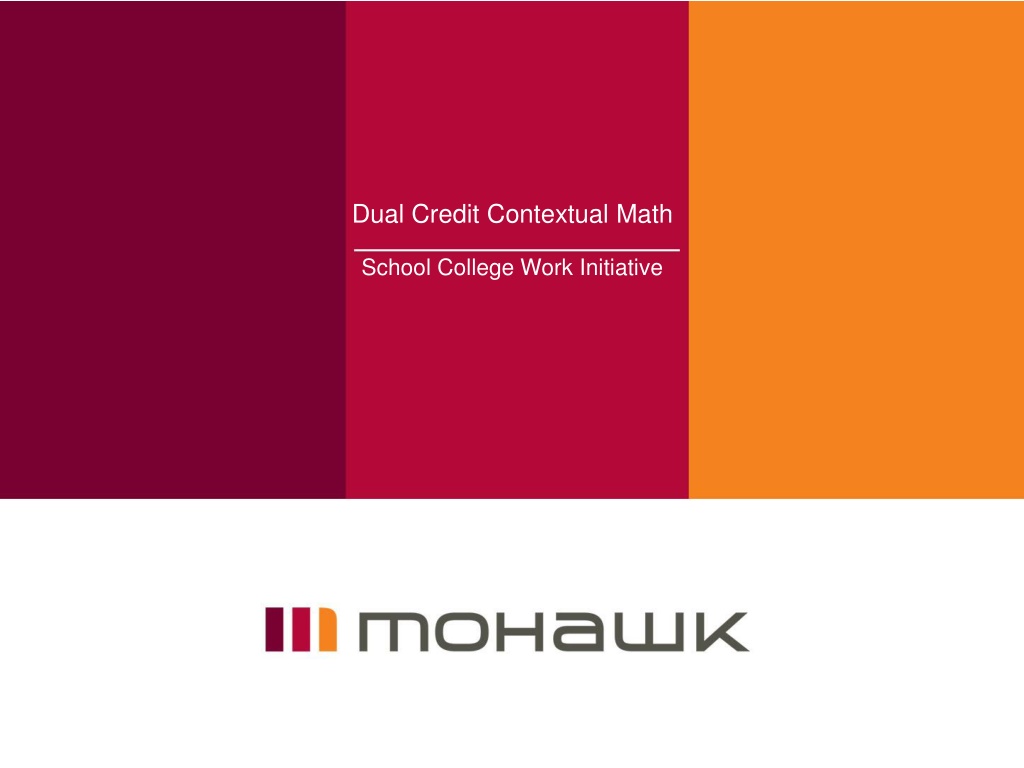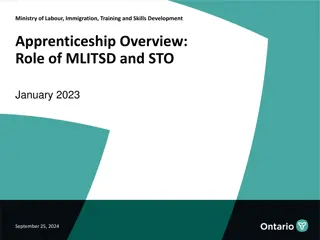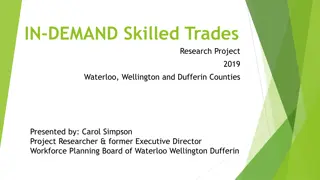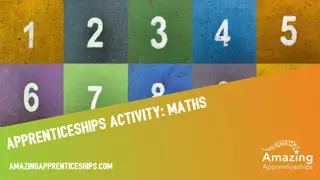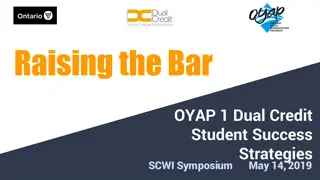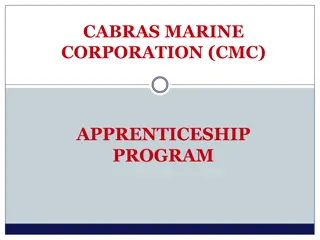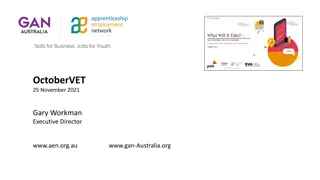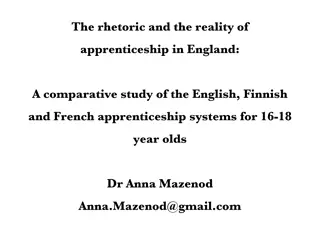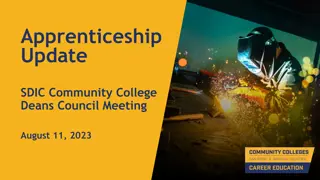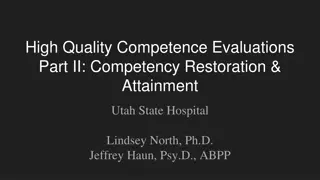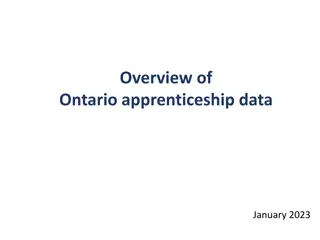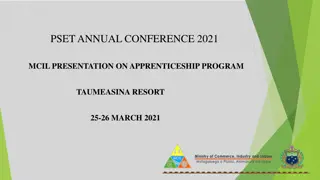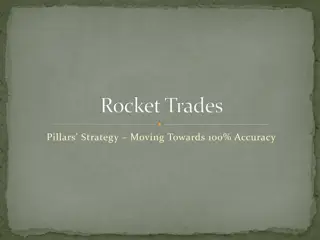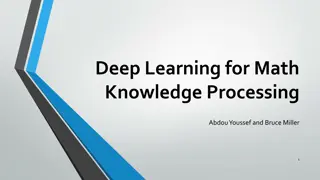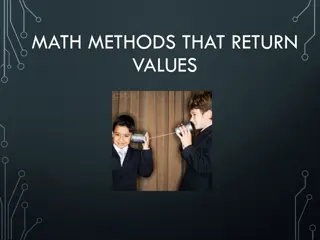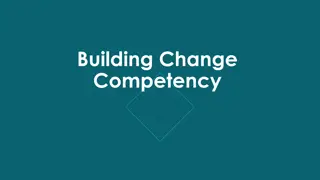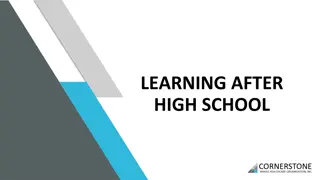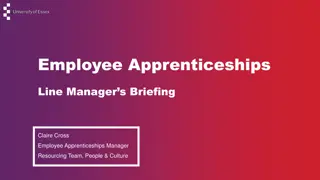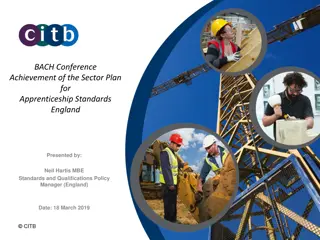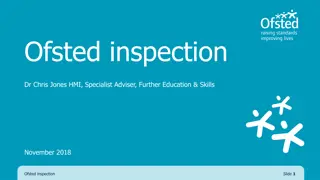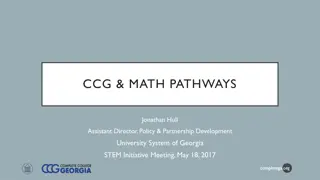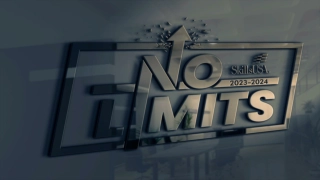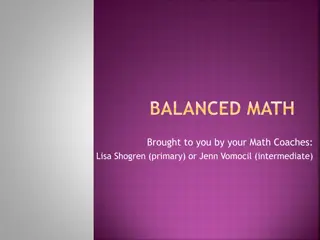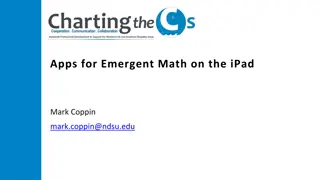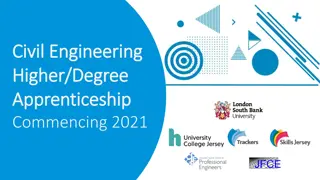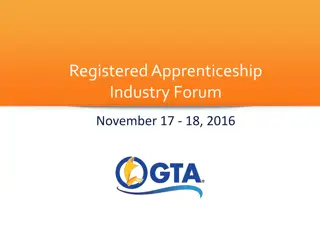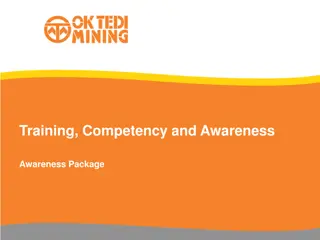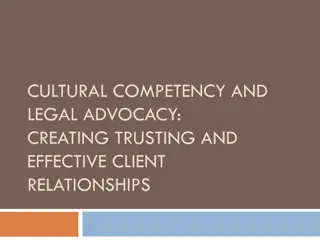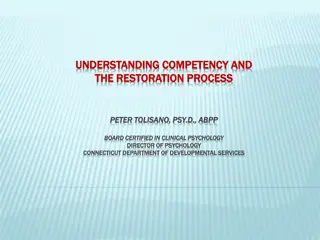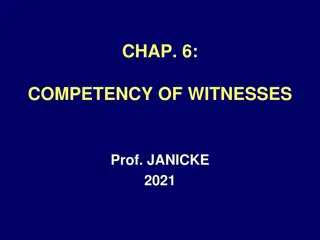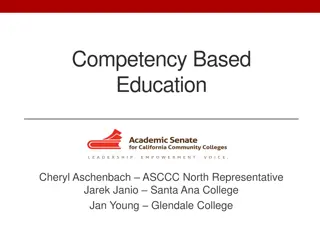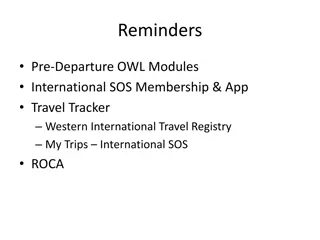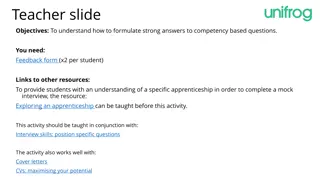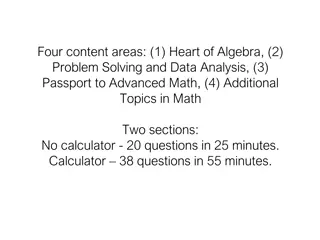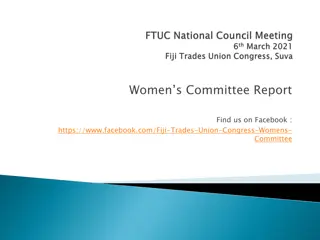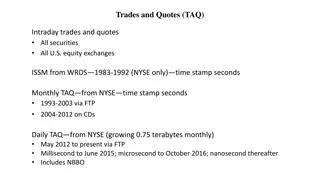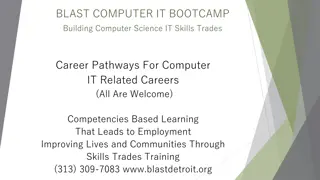Addressing Math Competency in Skilled Trades and Apprenticeship
Addressing the challenge of math competency and self-efficacy in careers within Skilled Trades and Apprenticeship, Mohawk College developed a dual credit contextual math course in collaboration with local school boards. The course aims to enhance foundational math skills, debunk myths, and equip students with the necessary skills for success in various trade sectors. Through shared experiences, observations, and lessons learned, the initiative focuses on empowering students for future career opportunities.
Download Presentation

Please find below an Image/Link to download the presentation.
The content on the website is provided AS IS for your information and personal use only. It may not be sold, licensed, or shared on other websites without obtaining consent from the author. Download presentation by click this link. If you encounter any issues during the download, it is possible that the publisher has removed the file from their server.
E N D
Presentation Transcript
Dual Credit Contextual Math School College Work Initiative
Welcome & Introductions The greatest challenge impacting success in careers in Skilled Trades and Apprenticeship is math competency and self-efficacy Mohawk College worked with math teachers from 3 local school boards to develop a dual credit contextual math course to address these issues Sharing the journey, representing the School of Skilled Trades and Apprenticeship: Doug Daniels, Associate Dean, Industrial and Motive Power Lindsay Richardson, Faculty, Dual Credit Math Teacher Marla Robinson, Program Coordinator, Faculty
Agenda The Challenge Confessions from the Classroom Skilled Trades & Apprenticeship Math Assumptions, Myths & Realties The Research Foundational Math Skills The Solution Dual Credit Contextual Math The Lessons Learned Self-Efficacy & Success Next Steps Back to the Future
The Challenge Confessions from the Classroom Sharing our collective observations and experiences
Assumptions, Myths & Realities Assumption All you need to be successful in skilled trades is the ability to work with your hands Reality Skilled tradespersons require solid math skills in every sector: Motive Power Automotive Service Technician, Truck & Coach etc. Industrial Millwright, Machinist, Welder etc. Building & Construction Plumber, Carpenter, Electrician etc. Service Early Childhood Educator, Hairstylist, Chef etc.
Assumptions, Myths & Realities Myth Students choosing careers in skilled trades and apprenticeship will work in SI units Reality The majority of trades still work in Imperial units The ability to interpret fractions and convert between halves, quarters, eights, sixteenths and thirty-seconds is paramount to reading a drawing and use a steel rule or tape measure (without a calculator on the job site) Estimating and developing solid number sense are critical skills in both SI and Imperial units
Assumptions, Myths & Realities Assumption Apprenticeship math is easy Reality Much of the math in apprenticeship and skilled trades is foundational, however, many of the skills have not been reinforced throughout high school and present challenges for learners
Assumptions, Myths & Realities Myth Math is not important for careers in skilled trades Reality Picture your home if: The roofer underestimates the material required for a job The cabinetmaker is over inch on the cabinet and the fridge will no longer fit Picture your hair if: The hairdresser has no concept of what trim an inch is or proper proportions of dye for the desired shade Picture your meal if: The chef must modify the recipe for additional or fewer guests
The Research Mohawk College Math Assessment A decade of data identified students at risk based upon scores on a pre- emptive math assessment Students who did not test well on core foundational subjects who did not complete remedial exercises to increase math skills were less likely to complete their program of study within the allocated time Students who completed a Prep Math for Technology course prior to their first semester completed the program of study on time with no failures math skill and self-efficacy is a key performance indicator for success in skilled trades and apprenticeship programs
The Research The College Mathematics Project (CMP) Project led by Seneca College analyzing the math experiences of first year students in 24 community colleges Final report published in 2012 indicated a need for a provincial numeracy strategy to provide students with a solid foundation in math 33 per cent of Ontario college students taking mathematics are at risk of not completing their programs due to low achievement in that subject. One in 4 of these students are studying college preparatory mathematics which covers concepts initially taught in grades 6 through 8 as part of the Ontario elementary school curriculum.
The Solution Dual Credit Contextual Math building upon the recommendations of the College Math Project Create a foundational course to develop core skills Create a contextual framework to make the content real, meaningful and authentic to learners to answer the question
The Solution Work with Pearson Publishing Stepping it Up a math program designed to meet the recommendations of the College Mathematics Project
The Solution Break the book down into three pieces less intimidating and threatening Utilize MathXL to provide flexible learning options for students aligned including rich resources for studying as well as homework Supplement the program with hands-on activities related to trades to reinforce the principles Provide opportunities for early success to build math confidence and reduce anxiety
The Solution Leverage situations and concepts the students are familiar with to explain key principles then tie them to trade and career equivalents. Celebrate what students already know and make help them make the connection to the other areas
The Solution Trade Calculations MECH 10027/MECH 10051 has run a dual credit with the following boards: Hamilton-Wentworth Catholic District School Board Hamilton-Wentworth District School Board Halton Catholic District School Board Approximately 200 students at from six different schools have earned the dual credit and improved math skills as well as confidence as a math learner
The Solution Core modules in the program in order are as follows: Whole Numbers Fractions Decimals Ratio and Proportion Percent Measurement Geometry Algebra By the way, there are no calculators used in the first few modules - yes we focus on rote skills for multiplication which empower the students when dealing with fractions
Self-Efficacy & Success We know that poor experience with mathematics at an early age tended to make students believe they could not learn math Many felt powerless in terms of math and believe they will never be able to be successful in mathematics Early activities build confidence and skills and self-efficacy as a learner A cycle of success is created when students feel they are capable
Shedding Math Baggage It truly is never to late to start over in math and gain the skills and confidence to be successful Students tell us they feel confident in math and they are no longer dreading math. Was it a hard sell? Yes initially but once they realized they could do math without a calculator we had tremendous buy in from the majority of students
Back to the Future Based upon the success of this program, the foundational math course will now become part of key post-secondary programs at the Stoney Creek campus Students will have the opportunity to be exempted from this first course based upon math pathway and score on the initial math assessment A house can not be build without a solid foundation completing a foundational math course provides the basis to develop further math skills successfully
